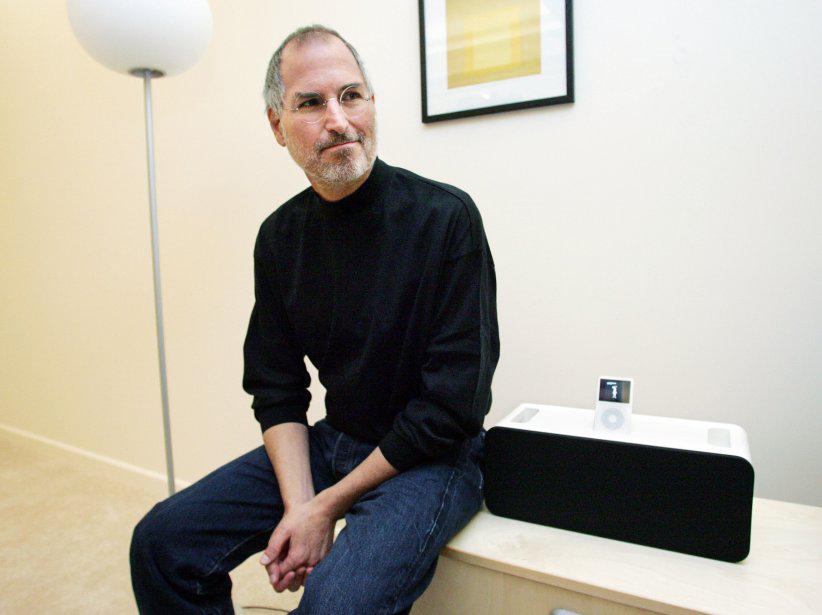
With the normcore movement, everything that is mundane, unbranded, ordinary, normal, even flat and boring, becomes exquisitely chic. Trend to follow, temporary wandering or suicide of individual style? Let's decipher the phenomenon...
Published on Apr 12, 2014 Sylvie St-Jacques THE PRESSImagine a time when Williamsburg hipsters (and their Mile End cousins) ditched their beards, designer clothes, and third-wave “flat whites” for a cap-topped head, white t-shirt, and plain coffee.” two creams, one sugar” from Dunkin Donuts. An era where we would model our looks on the characters of Seinfeld and where we would be inspired by tourists in bermudas, with their banana bags at the waist and their "Crocs" on their feet.
Dream no more. The unthinkable happened. For the past few weeks, the invasion of normcore has been panicking social networks and has been the subject of articles in Liberation, Slate, The Guardian and Forbes.
The norm what? A contraction of the words "normal" and "hardcore", the term normcore was propelled by an article by Fiona Duncan in New York magazine last February. During a walk through the streets of Soho, Duncan found that she no longer held the aesthetic codes required to distinguish artists from "middle-class" American tourists. Everyone wore the same Bermuda shorts, the same white trainers, the same uniform t-shirts... Had the hipsters fled, ousted by visitors in faded “dad jeans”?
In order to elucidate this abyssal mystery, she called on a friend at the forefront of New York currents who, in response, formulated the following text: “LOL Normcore.”
In fact, Duncan was right when he spotted a concept previously invented by the firm K-Hole, a New York collective specializing in trends. In a report titled The Death of Age, K-Hole analysts/prophets predicted the “New World Order of Banality” and described normcore as “a post-authentic cool attitude that adheres to sameness.” More empathetic than tolerant, adaptable, post-aspirational, and situational, the normcore disciple "finds liberation in feeling unspecial."
In short, after years of racing for singularity, the urban hero just wants to put on comfortable sneakers and blend in with the crowd...
In 2004, the Torontonian Hal Niedzviecki described precisely the opposite, in Hello, I'm Special, an essay on the perpetual desire of a hyper-individualistic age obsessed with signs of distinction. Even before Facebook, Twitter, Instagram and the like made each of us public figures, Niedzviecki delved into the contemporary obsession with tattoos, karaoke and other hallmarks of an ardent celebrity cohort.
Reached from his home in Toronto, Niedzviecki assesses with some amusement the migration from ultra-individualism to normcore. He interprets this craze for normality as a conformist reaction of a desperate generation “and riddled with student debt”, lost in an era of excess and overpriced fashions. "Dressing normcore is nothing more than imitating those young Silicon Valley billionaires, those Mark Zuckerbergs and Dick Costolos who go to work in generic t-shirts and baseball caps."

hipster hara kiri
Since its remarkable landing, the expression normcore has inspired web designers, who have fun listing images emblematic of this aesthetic of normality. The Justnormcore.com site, which lines up loose corporate logos from H&R Block or CCM, Wrangler jeans ads or even vintage photos of the Seinfeld gang or Bill Cosby, is very committed to its definition of a phenomenon with contours still blurred.
"In my opinion, normcore is a comical example of the determination of the hipster to distinguish itself from the mainstream", assesses Emma Overton, who recently wrote an article on the subject in the online magazine Askmen.com.
The theory of this Montreal journalist to explain this shift towards banality: no one is unique anymore, because when everyone tries to be different, we all end up looking alike... "It's also a return to 90s”, advances the one who perceives, in this taste for the banal, a nostalgia of the “millenials” for the style that their parents had, 20 years ago.
With his uniform polo shirts and his “dad jeans” from Gap, Barack Obama was nicknamed “normcore president” by the tenors of the movement. On Twitter, Gap boasted of its status as a “normcore supplier since 1969”.
Verification made during a recent exploration in the Mile End district, Montreal hipsters have not yet caught up with the normcore wave. But according to Emma Overton, the harshness of winter 2014 may be hiding a banality buried under layers of warm clothing. “Perhaps the return of spring will reveal a normcore shift among hipsters.”
Isn't this generation known for its short attention span not likely to be quickly tired of so much banality? Perhaps. But in the meantime, we like to think that we imagined the unthinkable: the return to normality.
False trend or true delirium?
Not so simple, to be normcore, as demonstrated by the confusion around the interpretation of this expression of which K-Hole claims paternity.
To be normcore, it is not enough to put on “dad jeans”, a fleece sweater and a Patagonia turtleneck, insisted on specifying the New York agency, worried that the expression takes on all kinds of erroneous meanings. on the Internet. Fiona Duncan, the New York journalist who first popularized the normcore concept, even posted a mea culpa, citing tight deadlines as justification for her misinterpretation of the concept.
In reality, the normcore mindset would be to "find liberation in the feeling of not being special, and realizing that being adaptable leads to a sense of belonging". A philosophical posture which, apparently, would have nothing to do with the white New Balance that we put on.
Still, everyone (and his grandmother) seems to have his two cents to offer on this little shock wave which raises fears of the slow death of the hipster. Les Inrocks, in an ironic text that reports the tastiest quotes from the Tumblr site devoted to normcore, suggests that the aesthetic ideal of this return to normality would be a cross between Steve Jobs and François Hollande. Dazed, to set the record straight, emphasized “the fluidity of identity” associated with the concept.
Anti-fashion rebellion? This is also what dozens of bloggers suggest. Better: an extension for Google Chrome allows you to banish the hashtag #normcore from your social media thread. Banality may try to triumph, it is not tomorrow that it will stop progress.







